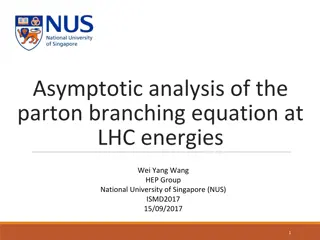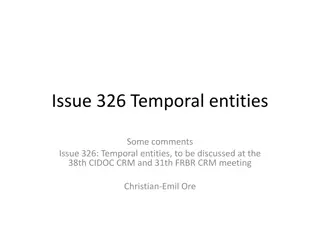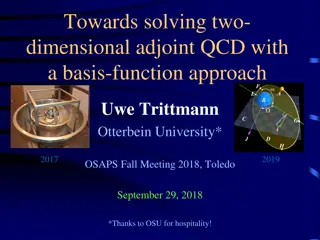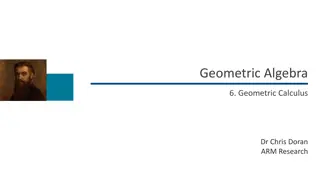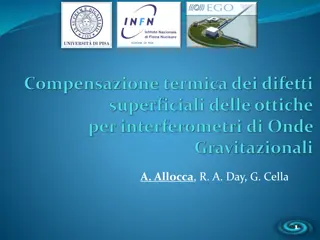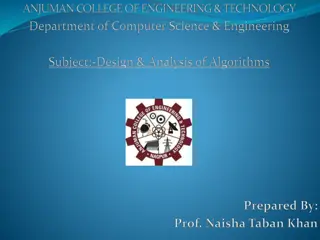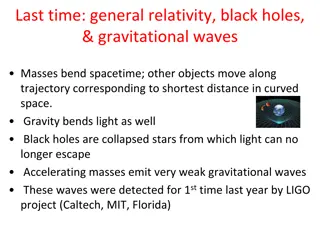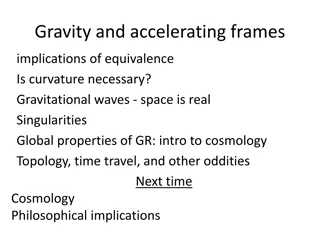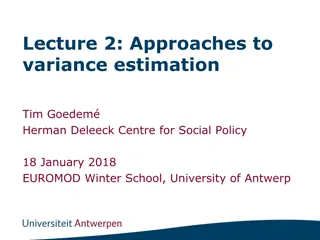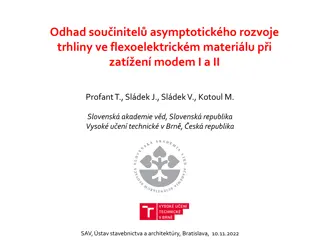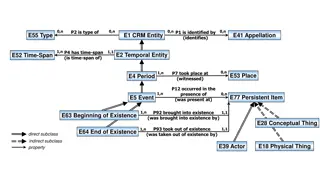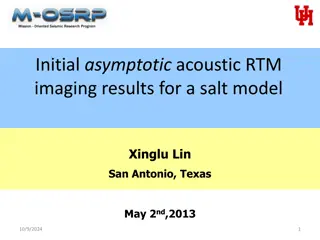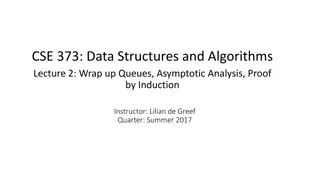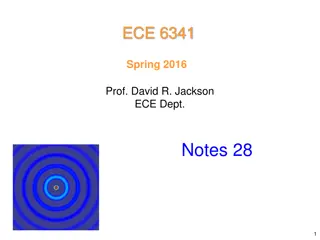Understanding Asymptotic Structure in Physical Spacetime
Exploring the implications of asymptotic flatness and symmetry in physical spacetime, focusing on concepts like conformal completion, Einstein's equations, and the Bondi-Metzner-Sachs group (BMS) for providing physical interpretations of mass, linear momentum, and angular rotation subgroups.
Download Presentation

Please find below an Image/Link to download the presentation.
The content on the website is provided AS IS for your information and personal use only. It may not be sold, licensed, or shared on other websites without obtaining consent from the author. Download presentation by click this link. If you encounter any issues during the download, it is possible that the publisher has removed the file from their server.
E N D
Presentation Transcript
BMS with applications B atrice Bonga
Key idea: bring infinity to a finite distance Conformal completion
Asymptotic flatness ?, ??? is asymptotically A physical spacetime flat if there exists a spacetime (?,???) with boundary ?? ? ?2such that 1. and ???= 2 ???are smooth on ?, = 0 and ??= ?? is nowhere vanishing on 2. Einstein s equations are satisfied with ??? such that 1 ???has a smooth limit to
Consequences ??is null on Einstein s equation ?? ???= induced metric on is degenerate: 0 + + Conformal freedom ? ? = ? ? = ????? ??? ??? ?? ?? = ? ???
Universal structure ???,??= { ?????,? ???}
1 ? = Example: Minkowski spacetime ?? = 2? ? ?2= ??2+ ??2+ ?2??2+ sin2? ??2 ? ?2= ??2 2?? ?? + ?2??2+ sin2? ??2 ??2= 2??2+ 2 ?? ? + ??2+ sin2? ??2 ??2 = 2 ?? ? + ??2+ sin2? ??2 Others examples: Kerr-Newman spacetimes, Weyl spacetimes, etc.
Generic asymptotically flat spacetime ^ Angular momentum aspect Flat Space Mass aspect Radiative modes
Asymptotic symmetry group Spacetime diffeomorphism that leave the universal structure at Scri invariant Universal structure ???? = 2 ? ???with ?? = 0 ??? = ? ?? Coordinates 2 ? ??? = 0
Bondi-Metzner-Sachs group (BMS) Bigger than Poincare (=translations & rotations) BMS = supertranslations & rotations 1 2 super-translations rotations
What is BMS good for? Provides quantities with a physical interpretation! Mass translation subgroup Linear momentum BMS Angular (many) rotation subgroups momentum (up to supertranslations) supertranslations subgroup Memory effect
Memory effect ~ DC while wave ~ AC The memory effect is the permanent relative displacement of an array of test particles brought about by the passage of a burst of gravitational radiation and/or null stress energy.
Memory tensor Integrating the geodesic deviation equation twice, the change of the relative displacement is ? ??= ?????????? ? ?1 ?? ?? ?0?0? ??= ?0 ?0
How is memory related to supertranslations? It is generated by it! Supertranslation
Another diagnostic: flux of super-momentum ?1 1 ?? ? ? ?? ?? 2 ??????? ?= 32 ? ? ?0 Soft part Hard part ?1?? ?? = ? ?? ????? ?0 = ? ?? ????? ???
Is this also true in higher dimensions? Some background Coulombic Radiation 1 ? 2 1 1 ?? 3 ? d 4 5 6 Coulombic Radiation ? 1 ? 2 ? 3 ? 1 ? 3/2 ? 2
Memory effect for d>4 All radiative processes up to leading Coulombic order vanish, but leading Coulombic order is: Odd Even (? 3)= 0 (? 3) 0 ?? ?? No memory effect in odd dimensions! (Ordinary and null memory cancel each other exactly.) Memory tensor is no longer determined by only a scalar, also vector and tensor parts.
Scalar memory effect for d>4: gauge! Trivial diffeomorphism!
BMS in other contexts Generic null surface [Chandrasekaran, Flanagan, Prabhu, Giribet, Donnay, ] BMS BH horizons [Rahman, Wald; Giribet, Donnay, Gonzalez, Pino; Strominger, Hawking, Perry; ] Boundary conditions are as much an art as a science!
Generic null surface ? Universal structure is given by null vector ?and non-affinity parameter ? : ?,? = ?? ?,??? + ? and ? ? . BMS -like group, but yet bigger! Lorentz group is replaced by the group of all diffeomorphism on the base space ? (even if ? = ?2this is larger!) Supertranslations are now an non-abelian group instead of abelian
Black hole memory Conjectured to play key role in resolving information paradox Recap: Memory at null infinity + Leading order change in relative displacement of test particles initially at rest The change induced by a supertranslation ?+ The soft part of the supermomentum flux
Black hole memory Stationary timelike geodesics cannot be used to define memory Accelerated worldlines can stay outside, but displacement depends on acceleration ?+ Null generators on +can be used to define a relative displacement
Black hole memory not related to supertranslations Key difference: null infinity has a more rigid universal structure. All asymptotically flat spacetimes have the same ???, radiation only changes the next order. Black hole horizons do not.
Beyond asymptotic flatness Relax boundary conditions to include defects (e.g. cosmic string) BMS plus super rotations [Barnich & Troessart; ]
Beyond asymptotic flatness: cosmology Expanding spacetimes are not asymptotically flat!
Positive cosmological constant The asymptotic region is now spacelike Asymptotic symmetry group is no longer BMS! [Penrose; Anninos; Ashtekar, Bonga, Kesevan; ]
Decelerating FLRW spacetimes Universal structure very similar to asymptotically flat spacetimes [Bonga, Prabhu]
Conclusion BMS group is the asymptotic symmetry group of asymptotically flat spacetimes BMS-like structures appear in many different contexts with null surfaces Thank you for listening!






